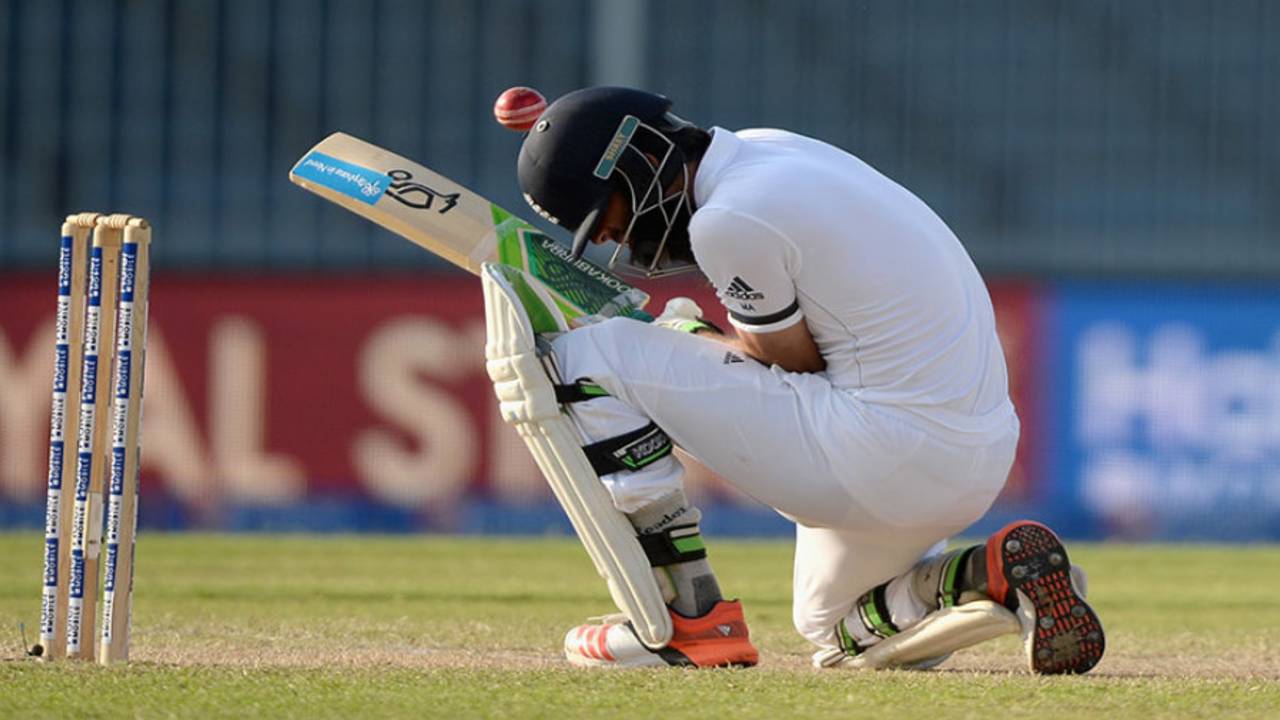Professional cricketers in England will have to wear mandatory helmets next season while batting or fielding close to the wicket.
The ECB Board endorsed changes,
first reported on ESPNcricinfo, on Wednesday to regulations governing the use of helmets across the professional game, bringing to a formal end the fast-disappearing era of the cap and floppy hat and the cry from the likes of Brian Close, fielding at short leg, to catch the rebounds.
Any player who does not wear what the ECB calls "compliant protective headgear" will not be permitted to play.
The insistence upon helmets follows several deeply troubling, high-profile incidents that have brought home the danger of the sport, including the tragic death of Australia's Phillip Hughes after he was struck in a match in his own country and Australia and the blow suffered by Craig Kieswetter, the former England wicketkeeper, which ended his career.
The ECB's chief medical officer Dr Nick Peirce also sought to put things in perspective, however, saying: "We can see from our injury surveillance that cricket is not a dangerous sport in comparison to many other leisure activities."
The key changes in the professional game in England and Wales will apply to batsmen facing all types of bowling, wicketkeepers standing up to the wicket and fielders standing closer than eight yards from the batsman's middle stump - except behind the wicket on the off side.
The ECB is also recommending that all recreational cricketers wear helmets which meet the latest British safety standard from next season, although it has retreated from trying to make this compulsory.
Instead, as the outgoing chief executive of the PCA Angus Porter said, the hope is that professional cricketers will lead by example. The use of protective headgear, however, is already mandatory for all Under-18s within the recreational game. The growing cost of recreational cricket, however, is bound to lead to some resistance.
The changes - new regulations will be confirmed in the New Year - follow a joint review of existing safety guidance by the ECB and the Professional Cricketers' Association and are designed to reduce the risk of head and facial injuries within the game. Key measures which ECB has recently taken in this area include:
Forming an ECB Cricket Safety Working Group which reviews risks to safety and the well-being of players and spectators.Re-defining the role of the ECB Chief Medical Officer to enable greater emphasis to be placed on injury surveillance and research into the safety of the game.Setting up an Emergency Care Working Group to improve training and provision of emergency care standards at first-class, 2nd XI and training venues.Introducing new concussion guidelines via the ECB's Sports Science and Medicine department. The department is also working with Birmingham University to conduct further research into concussion in cricket.Collaborating with the Loughborough Institute of Sport Technology, through sponsorship of a PHD researching helmet design, head injuries and safety in relation to cricket.Peirce's comments that cricket was not a high-risk sport were tempered by the reality, as the ECB and PCA see it, that action needed to be taken.
"We can see from our injury surveillance that cricket is not a dangerous sport in comparison to many other leisure activities. However, as we have seen in recent times, the cricket ball can cause significant injury and it is extremely important that players take the appropriate precautions when batting, keeping wicket or fielding close to the stumps.
"The latest cricket helmets have made significant strides in providing protection against potentially catastrophic injury and we would strongly advise all players to make sure their helmet conforms to the latest British Safety Standard.
Today's decision is a major step forward and will help make first-class cricket safer as well as sending a strong message to the recreational game about the importance of helmet safety."
Porter said: "We welcome today's decision on helmet use. It provides an excellent opportunity for professional cricketers to lead by example and drive greater awareness of the importance of player safety across the whole game."
The rule covers matches for all England teams and programmes, county first, second and academy XIs and Women's Super League and all matches played by the first-class counties. It has yet to be confirmed whether it will extend to the Minor Counties.
Helmet regulations for England's disability cricketers will be reviewed shortly.
Under current rules for Under-18s, batsmen and wicket-keepers standing up to the stumps must wear a head protector. This rule will continue to apply, but it is now strongly recommended that all Under-18s who are in the ECB's county age-group programmes and above should follow the new regulations. Again, for reasons that remain unclear, this has not been made mandatory.
As of November 2015, there are more than 20 helmets from seven different manufacturers that meet the new standard. The full list of helmets meeting this standard is available
hereDavid Hopps is a general editor at ESPNcricinfo @davidkhopps
